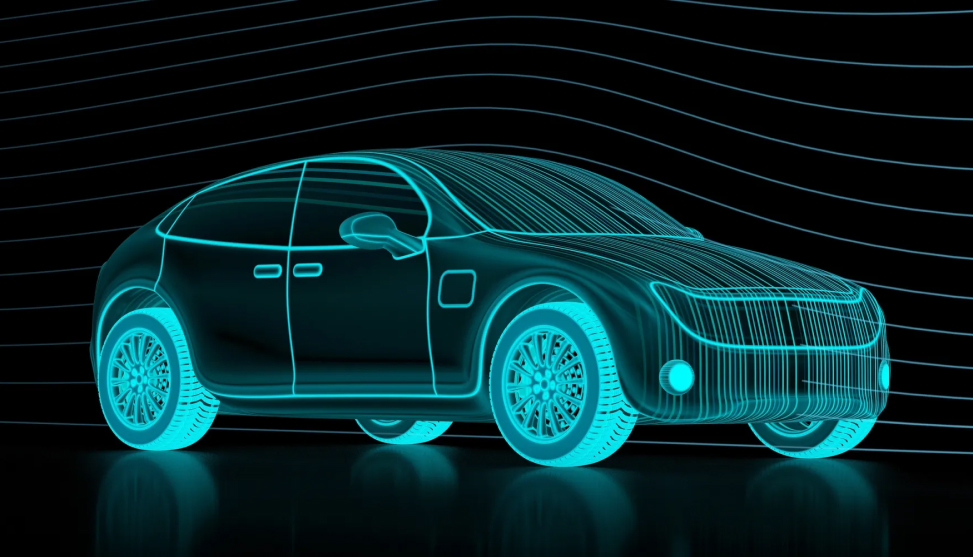Future cars could be powered by batteries without cobalt

January 20, 2024
This article has been carefully evaluated in accordance with Science X's editorial procedures and policies. Editors have underscored the content's credibility through various measures such as:
- Fact-checking
- Utilizing peer-reviewed publications
- Source verification
- Proofreading
by Anne Trafton, Massachusetts Institute of Technology
Electric vehicles frequently rely on batteries containing cobalt—a metal associated with high economic, environmental, and social impacts.
But researchers from MIT have created a battery material that presents a more eco-friendly and economically viable alternative for powering electrical cars. This newly developed lithium-ion battery's cathode uses organic materials instead of cobalt or nickel—common metals used in lithium-ion batteries.
The researchers, in their recent study, demonstrated that their newly designed material, cheaper to manufacture than traditional cobalt-based batteries, can perform on a par with metal-based versions in terms of electrical conductivity. The cost-friendly battery also stores a similar amount of energy and charges more quickly.
'I am confident this material holds great potential for its excellent performance,' mentions Mircea Dincă, the W.M. Keck Professor of Energy at MIT. 'It competes favorably with the prevailing technologies while alleviating economic burdens and environmental ramifications related to metal mining.'
Dincă is the leading author of this study, unveiled today (Jan. 18) in the ACS Central Science journal. Other contributors include Tianyang Chen Ph.D. '23, Harish Banda, a former MIT postdoc, Jiande Wang, an MIT postdoc, Julius Oppenheim, an MIT graduate student and Alessandro Franceschi, a University of Bologna research fellow.
Lithium-ion batteries, which power most electric cars, recharge as lithium ions move from a positive electrode (the cathode) to a negatively charged one (the anode). Cobalt, a metal providing high stability and energy density, is fundamental in most lithium-ion batteries.
Cobalt's downsides, however, cannot be overlooked. It is a rare metal, subject to substantial price oscillations and primarily found in politically volatile regions. Moreover, its mining involves dangerous working conditions and produces toxic waste compromising the neighboring land, air, and water resources."
'Despite their ability to store a lot of energy and exhibiting performance features people desire, cobalt batteries pose issues concerning their limited availability and dramatically fluctuating costs. Furthermore, the expected rise in electric vehicle demand will lead to higher prices,' Dincă explains.
The multiple drawbacks associated with cobalt have sparked extensive research into alternative battery materials. Lithium-iron-phosphate (LFP) is one such substitute, which a few automobile manufacturers have started incorporating into their electric vehicles. However, it only delivers half the energy density of cobalt and nickel batteries.
Organic materials arise as another attractive alternative, but most currently lack cobalt-based batteries' conductivity, storage capacity, and lifespan. Organic materials exhibit low conductivity, meaning polymers or similar substances that maintain a conductive network are required—thereby reducing the battery's energy storage capacity.
About six years ago, Lamborghini provided funding for Dincă's lab to create an organic battery usable in electric cars. While developing partially organic, partially inorganic porous materials, Dincă and his team discovered one fully organic material demonstrating strong conductivity potential.
This material contains multiple layers of TAQ (bis-tetraaminobenzoquinone), an organic small molecule.s The layers of the material form a structure analogous to graphite, composed of amines facilitating strong hydrogen bonds and electron-storing chemical groups known as quinones.
These hydrogen bonds render the material highly stable and insoluble, which is vital because it keeps the material from dissolving into battery electrolytes, a common issue with some organic battery materials. This improves the battery lifespan.
'One of the main methods of degradation for organic materials is that they simply dissolve into the battery electrolyte and cross over to the other side of the battery, essentially creating a short circuit. If you make the material completely insoluble, that process doesn't happen, so we can go to over 2,000 charge cycles with minimal degradation,' Dincă says.
Tests of this material showed that its conductivity and storage capacity were comparable to that of traditional cobalt-containing batteries. Also, batteries with a TAQ cathode can be charged and discharged faster than existing batteries, which could speed up the charging rate for electric vehicles.
To stabilize the organic material and increase its ability to adhere to the battery's current collector, which is made of copper or aluminum, the researchers added filler materials such as cellulose and rubber. These fillers make up less than one-tenth of the overall cathode composite, so they don't significantly reduce the battery's storage capacity.
These fillers also extend the lifetime of the battery cathode by preventing it from cracking when lithium ions flow into the cathode as the battery charges.
The primary materials needed to manufacture this type of cathode are a quinone precursor and an amine precursor, which are already commercially available and produced in large quantities as commodity chemicals. The researchers estimate that the material cost of assembling these organic batteries could be about one-third to one-half the cost of cobalt batteries.
Lamborghini has licensed the patent on the technology. Dincă's lab plans to continue developing alternative battery materials and is exploring possible replacement of lithium with sodium or magnesium, which are cheaper and more abundant than lithium.
Journal information: ACS Central Science
Provided by Massachusetts Institute of Technology
This story is republished courtesy of MIT News (web.mit.edu/newsoffice/), a popular site that covers news about MIT research, innovation and teaching.




